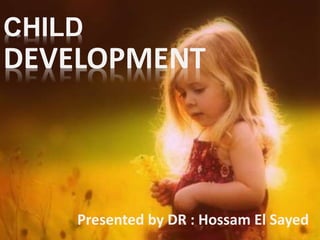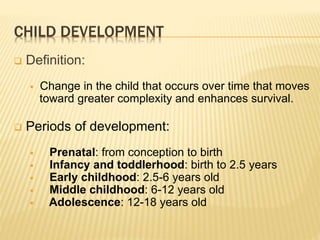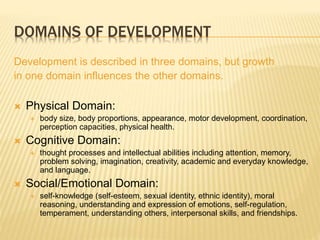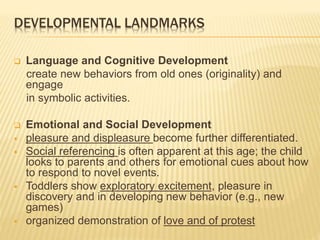Child development occurs in distinct periods from prenatal to adolescence. It involves physical, cognitive, and social/emotional growth. During the prenatal period, the zygote develops into an embryo and fetus. Fetal development includes the growth of organs and reflexes. Infancy spans birth to 2 years and involves motor and language milestones. Toddlerhood from 1.5-3 years sees the development of autonomy and gender identity. Jean Piaget's theory of cognitive development describes stages from sensorimotor to formal operations. Attachment theory proposes that early relationships impact later relationships.










![5- Maternal drug of abuse
Alcohol
Smoking
Marijuana , cocaine and heroin
Radiation : woman exposed to severe radiation
between weeks 2 and 15 of pregnancy, the baby
will be born with gross deformities or develop
cancer later in life.
Medications as : tetracyclines, valproate
[Depakene], carbamazepine [Tegretol],
phenytoin , progesterone-estrogens, lithium ,](https://image.slidesharecdn.com/childdev-150319150138-conversion-gate01/85/Child-development-11-320.jpg)




















